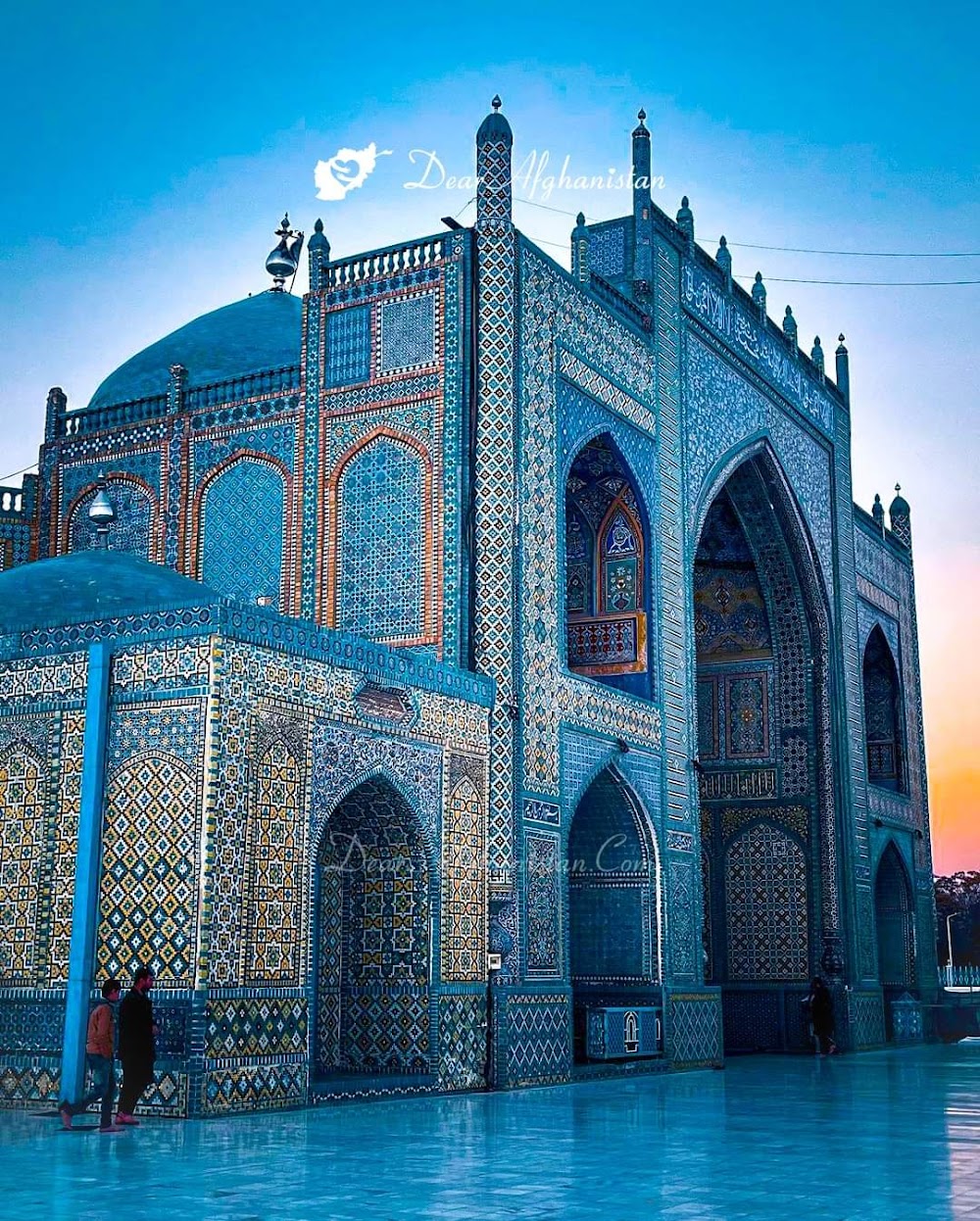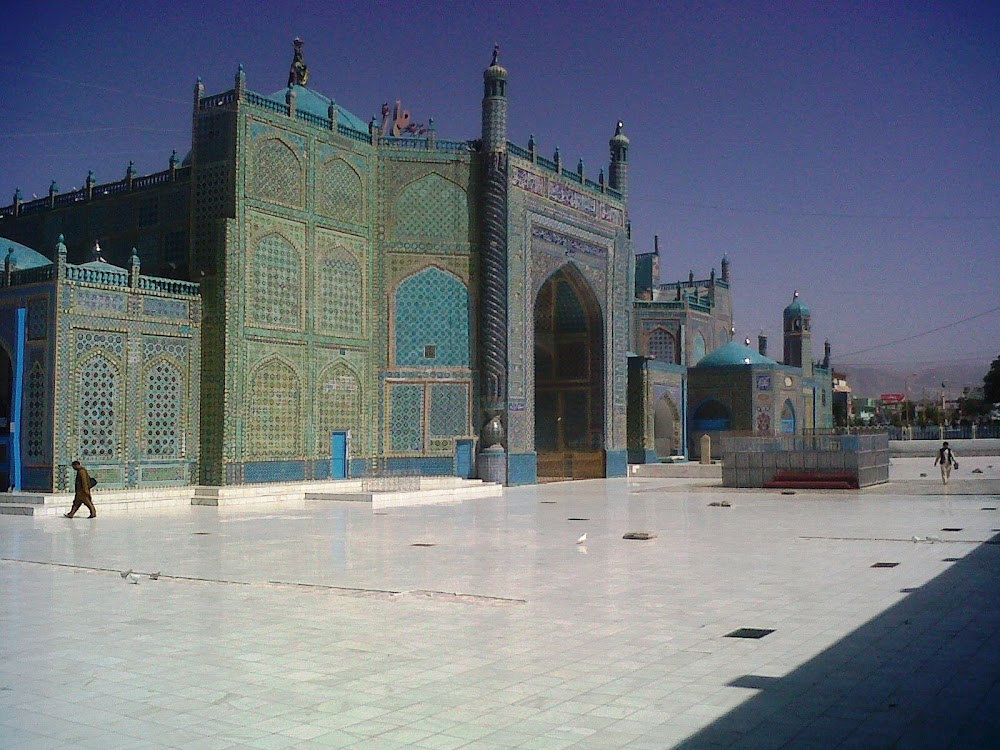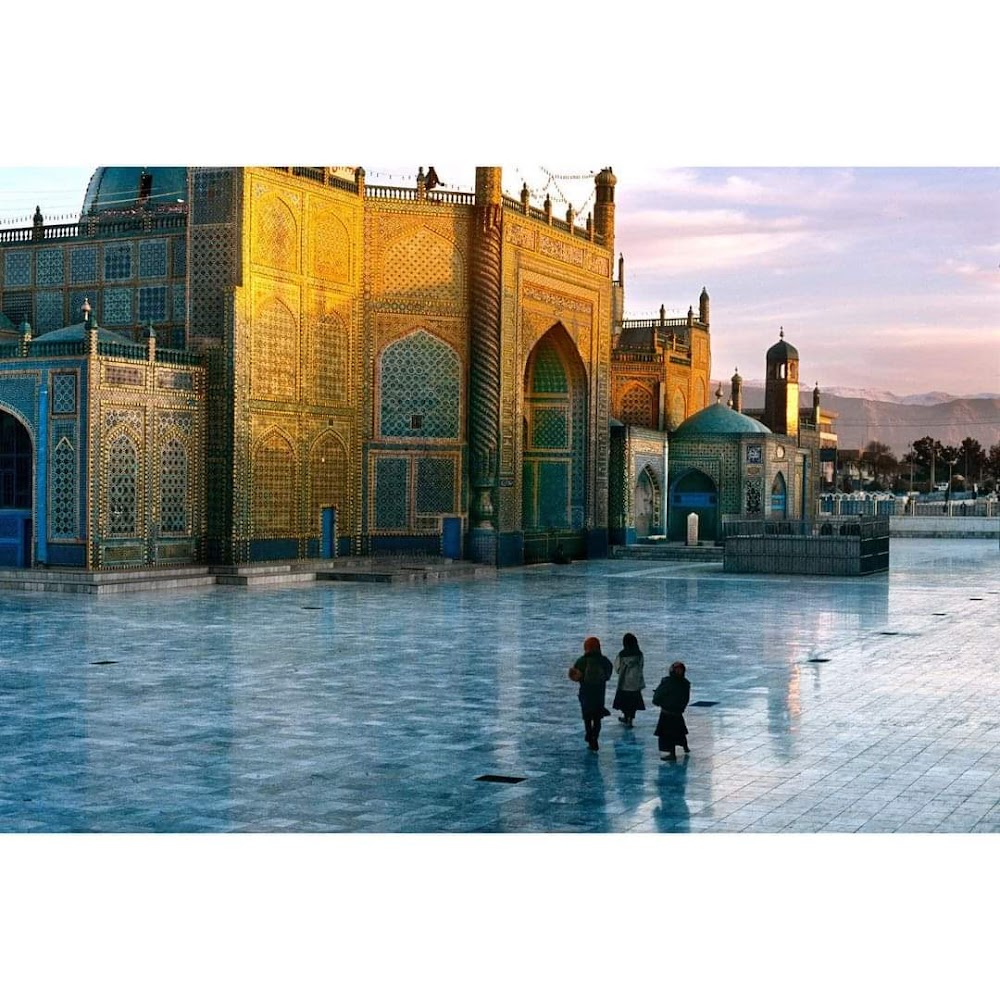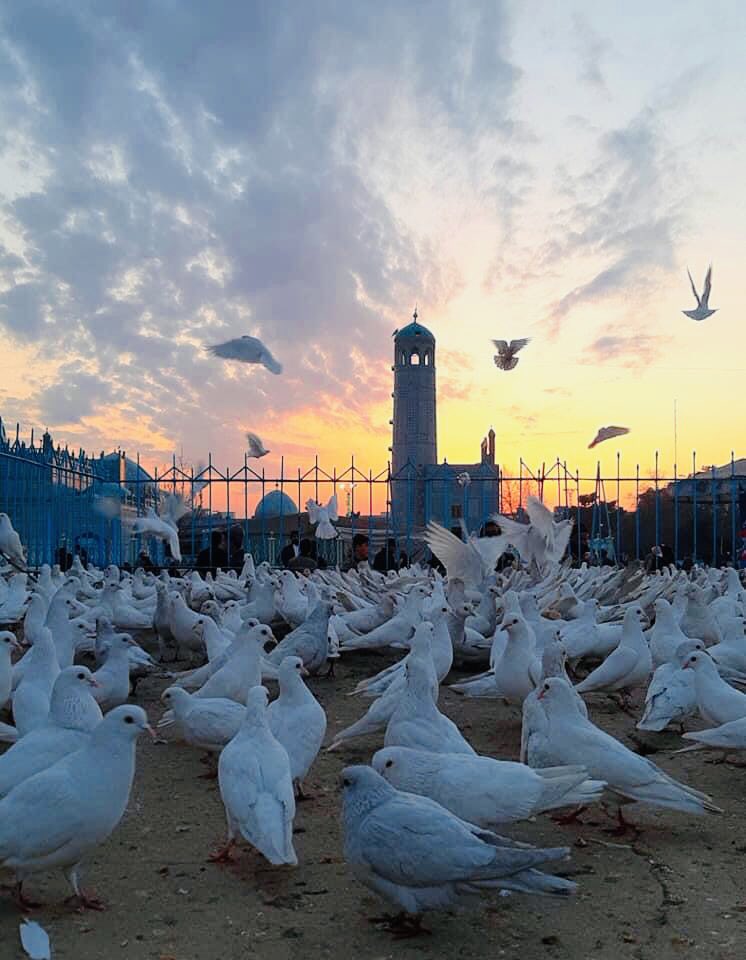Shrine of Hazrat Ali (مزار شریف)
Overview
The **Shrine of Hazrat Ali**, located in **Nangarhar, Afghanistan**, is not only a symbol of devotion but also a stunning example of architectural splendor. Locally known as **“Roza-e-Sharif,”** this revered site is believed by many to be the final resting place of **Ali ibn Abi Talib**, the fourth Caliph in Sunni Islam and the first Imam in Shia Islam. While the historical records surrounding its origins vary, the shrine holds immense spiritual significance for millions of Muslims around the globe.
The construction of the shrine dates back centuries, with various alterations and renovations carried out throughout different historical periods. Originally built during the **Ghaznavid dynasty** in the 12th century, the structure has undergone extensive expansions under subsequent rulers, including the **Timurids** and **Mughals**. Each ruling entity has left its architectural imprint, creating a beautiful fusion of Islamic styles with regional influences unique to Afghanistan.
The most significant transformation of the shrine occurred during the reign of **Sultan Husayn Mirza Bayqara** in the 15th century. A devoted patron of the arts and architecture, Sultan Husayn oversaw the expansion and beautification of the complex. Skilled artisans and craftsmen from across the Islamic world were invited to contribute to the project, resulting in a harmonious blend of **Persian**, **Central Asian**, and local architectural elements.
The shrine complex is an architectural marvel, showcasing intricate **tile work**, **calligraphy**, and **lush gardens**. Visitors are greeted by a grand entrance gate adorned with striking blue tiles, evoking a sense of awe and reverence. The central dome, the shrine's most iconic feature, is embellished with glittering green and blue tiles, symbolizing heavenly protection and spiritual elevation.
Surrounding the main shrine are several smaller domes and minarets, each embellished with detailed geometric patterns and **Quranic inscriptions**. The interior is equally majestic, with walls adorned in beautiful calligraphy featuring verses from the Quran, emphasizing the sanctity of the space. Above the resting place believed to belong to Hazrat Ali, intricately designed chandeliers cast a warm glow, enhancing the shrine's spiritual ambiance.
The shrine's **courtyard** serves as another focal point, featuring well-maintained gardens and reflecting pools that create a tranquil environment for prayer and contemplation. The lush greenery and the soothing sound of water provide a stark contrast to the harsh, arid landscape of Nangarhar, symbolizing life and renewal in a region often beset by hardship.
Caring for the shrine has always been a communal effort, with locals and pilgrims contributing to its upkeep. Caretakers, often descendants of those who originally tended to the site, play a crucial role in preserving its beauty and sanctity. Various charitable donations and endowments, known as **"waqf,"** ensure that the shrine continues to serve as a place of solace, spirituality, and community gathering.
Despite the challenges posed by **political instability** and conflict in the region, the Shrine of Hazrat Ali remains a beacon of hope and faith. It attracts both Shia and Sunni Muslims and serves as a testament to the rich cultural and historical legacy of Afghanistan. The resilience of the shrine reflects the indomitable spirit of the Afghan people, who have cherished and protected it through centuries of turmoil and change.
In recent years, significant efforts have been made to preserve and restore the shrine, ensuring its status as a monument of spiritual and architectural importance for future generations. International organizations, in collaboration with local authorities, have undertaken restoration projects to repair damage caused by conflict and natural wear. These initiatives underscore the universal recognition of the shrine's significance.
The **Shrine of Hazrat Ali** in Nangarhar is more than just a religious site; it is an integral part of Afghanistan's rich tapestry of history, culture, and faith. Its enduring presence serves as a reminder of the profound spiritual and communal bonds that transcend time and adversity.






